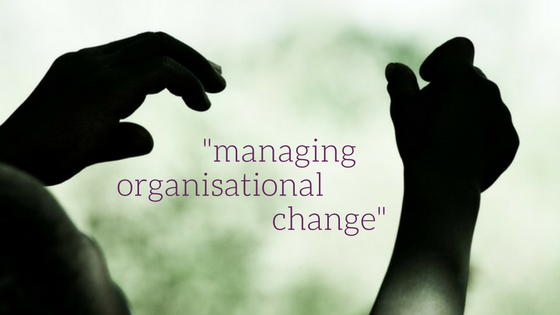An article published recently in a free online business magazine talks about a subject very close to our heart – change management. It took an in-depth look at what it sees as the most important things to think about when an organisation goes through a change.
A lot of what was said was useful, so we thought we’d summarise it for you (it was pretty long).
Getting started
Before you start the change process in your organisation, there are a few things to think about:
· What’s driving the change, is there a crisis or is this because you want to create something better?
· Who wants the change to happen, find out their reasons for wanting the change and why it matters? It’s worth asking what will happen if you don’t change.
· What do you want to see happen; change is often stretching at the same time it needs to be realistic. Be clear about what benefits change will bring, for the organisation, customers and the people who will be implementing the changes.
· How do you want to change? Will you need to build new capabilities and work practices?
· Who are the supporters and who are might hinder change? Anticipate the challenges you expect to face.
· How much of the change can I manage myself, who else do I need involve? You may need to call on others from outside the organisation.
· How are you going to create a positive feel (Buzz?) about the change and help people to understand why you’re doing it.
· Lots of different people will be affected, so get them involved. People rarely respond to change if they’re forced into it.
As with most things that are a bit difficult, change management needs thorough planning and time spending on it to do it properly. You can’t be gung-ho about it. Here’s some pointers to engage people during change:
Don’t sell
You might be confused by what we mean here, so let’s tell you more. When you try and ‘sell’ people something rather than explaining why you’re doing it, they don’t usually buy into it. They’ll sit and smile, and even nod their head in agreement, but they won’t believe what you’re saying. Some will even try to stop you as they’ll think what you’re doing is being imposed on them against their will. So you need to get them involved and invested in what you’re doing.
Be empathetic
Some people – usually managers and senior leaders – love change. They even thrive on it. But others don’t and will positively fear it. So you need to reassure that everything will be alright, or even better than it is now, after the change. Remember all the employee has to do it is do what’s necessary following the change. It’s yours (and your leadership team’s) responsibility to manage the change and keep things ticking over while it happens.
It can be emotional folks
People are emotional, so bear this in mind when people are going through change. When we’re faced with something uncomfortable or feel we’re doing something against our will, we can become defensive. That means we might do or say something we wouldn’t normally do or that we don’t mean. Anyone managing the change can get a bit emotional too, so it’s a good idea to try and take a step back and stop emotions running too high.
We spoke earlier about getting people involved. It will definitely help is situations like this.
Recognise we’re all different
Usually people fall into certain categories when your organisation goes through change – those who welcome it and those who don’t. The reliable, dependable, steady, habitual, process-oriented types generally aren’t very good at change. They don’t like it and could also be called the ‘We’ve always done it this way so why change it?’ type.
On the other hand, those who are unreliable, undependable, unsteady, non-habitual, non-process-oriented types will love change, and positively embrace it.
There are also theories floating around that certain industries being more receptive of change, and peoples’ age being important, which we’ll talk about another day.
Recognising what type people are will help you deal with individual employees more effectively.
So, what have we learned?
There’s some important points to take away from this blog.
- Inspire people to change by having a strong reason why, making objectives real and relevant.
- Get the right people in place with the right emotional commitment, and the right mix of skills.
- Get the team to establish a simple vision and strategy.
- Involve as many people as possible. Communicate the essentials, simply, and to appeal and respond to people’s needs.
- Invite constructive feedback and offer lots of support from leaders.
- Set aims in bite-size chunks so they’re easy to achieve.
- Don’t let up!
- Make change stick by weaving it into your culture.
9. Be constructive. Accentuate the positive. Be straight and open with people.
10. Enjoy the experience. Be respectful and helpful to people, and they’ll be respectful and helpful to you.
[optin title=”Are you concerned about change within your organisation?” border=”true” text=”We’d love to hear from you. Leave your details below and we’ll get back to you” buttontext=”Submit” successMessage=”Message has been submitted successfully.” errorMessage=”Failed to send your message. Please try later.” invalidEmailMessage=”Your email address does not appear valid.” image=”http://www.justlibra.com/wp-content/uploads/2016/10/Just-Libra-logo.png” collectfirstname=”true” collectlastname=”true” collectphone=”true” collectcompany=”true” leadlist=”609939″ id=”13434″]








